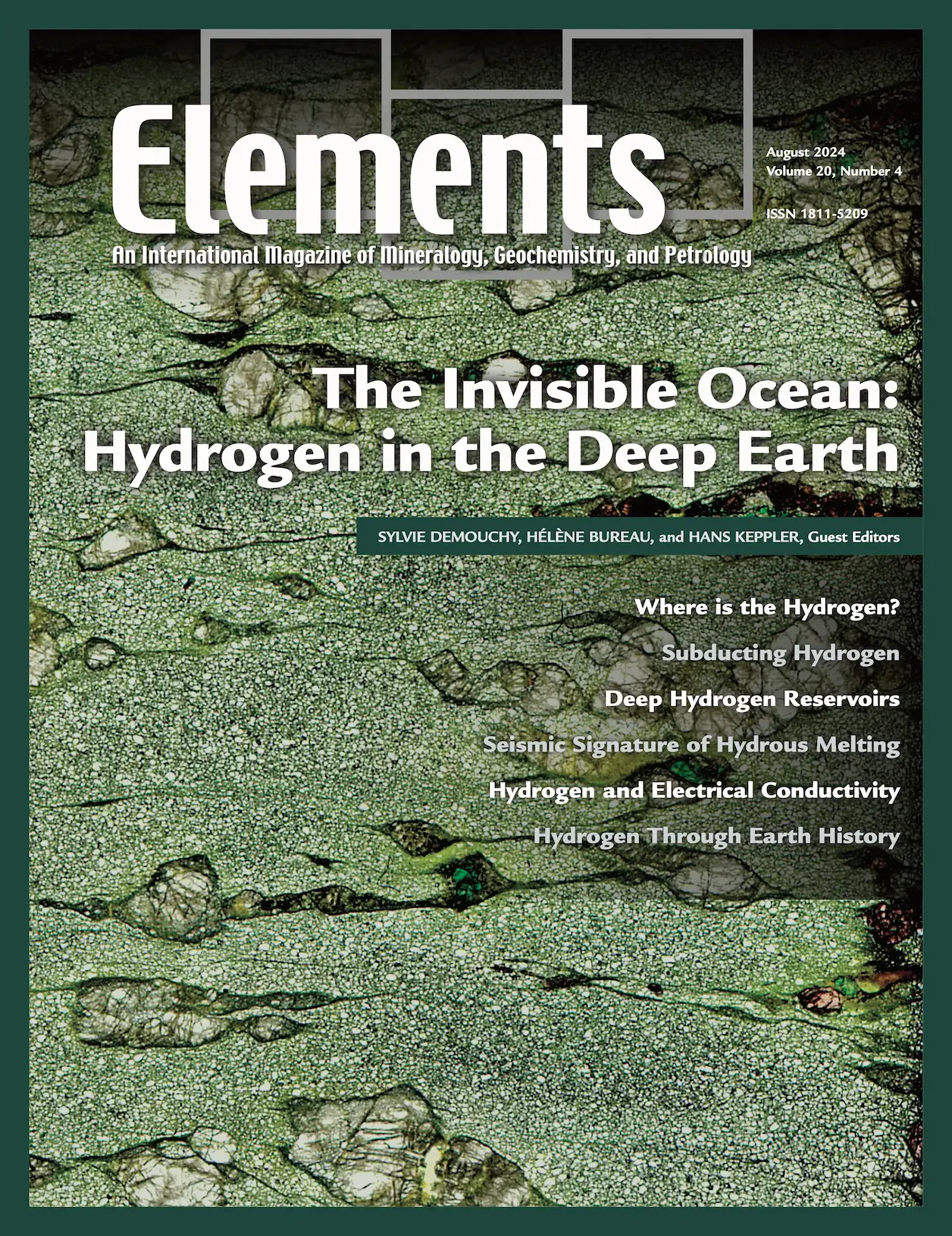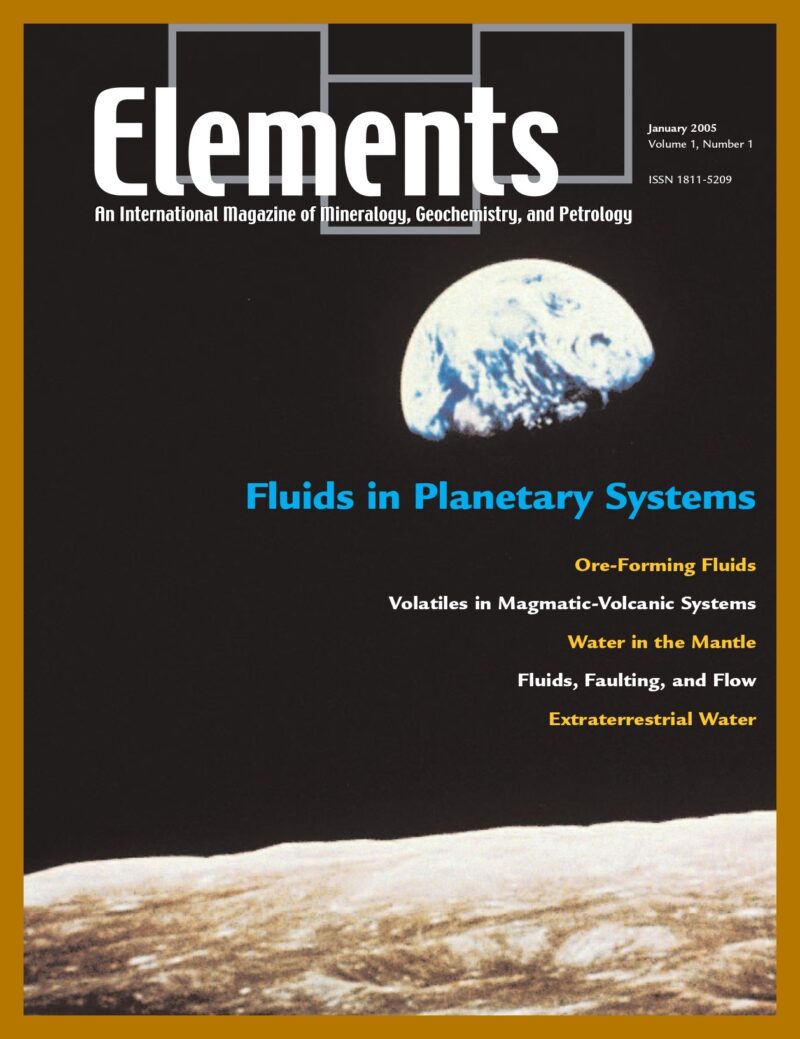
Himalayan Leucogranites (Poster v20n6)
October 25, 2024
Behind and Beyond Luminescence Imaging, October 2024, Vol. 20, No. 5
October 25, 2024The Invisible Ocean: Hydrogen in the Deep Earth, August 2024, Vol. 20, No. 4
$20.00
Hydrogen is the most abundant element in the universe and its distribution, transfer, and speciation in the deep Earth remain a fascinating topic of ongoing research. We review the most notable discoveries constraining the H cycle in the deep Earth. This includes new methods for detecting hydrogen, insights into the size of deep reservoirs, and new constraints from inclusions in ultradeep diamonds.
The Invisible Ocean: Hydrogen in the Deep Earth
August 2024, Vol. 20, No. 4
Hydrogen is the most abundant element in the universe and its distribution, transfer, and speciation in the deep Earth remain a fascinating topic of ongoing research. We review the most notable discoveries constraining the H cycle in the deep Earth. This includes new methods for detecting hydrogen, insights into the size of deep reservoirs, and new constraints from inclusions in ultradeep diamonds. Advances in seismic and magneto- telluric imaging provide unique data on the storage and mobility of water in Earth´s interior. Models of the early Earth and of its habitability critically depend on the behavior of hydrogen in a magma ocean–atmosphere system. Later in Earth history, water may have been essential for establishing plate tectonics, a phenomenon making Earth a unique planet.
Why You’ll Love Elements Magazine:
- Expert Contributors: Articles written by renowned researchers in the field of geoscience.
- Engaging Content: Join a community of readers who are passionate about Elements.
- Exceptional Quality: Each issue is printed on high-quality paper with stunning visuals and detailed illustrations that bring complex scientific concepts to life.
Order your copy of the August 2024 issue of Elements magazine today and explore The Invisible Ocean: Hydrogen in the Deep Earth.
Related products
-
Carbon Dioxide Sequestration, October 2008, Vol. 4, No. 5
$20.00Storage of carbon in the subsurface involves introduction of supercritical CO2 into rock formations beneath the surface of the Earth, typically at depths of 1000 to 4000 meters. Although CO2 is a relatively benign substance, the volume being considered is large.
-
Water On Mars, June 2006, Vol. 2, No. 3
$20.00During the past several decades, spacecraft data have transformed the planets from astronomical objects into geologic worlds. Mars is the current focus of planetary exploration, and NASA’s objectives for this effort are based on the theme, “follow the water.
-
Fluids in Planetary Systems, January 2005, Vol. 1, No. 1
$20.00Water and other geofluids play an important role in the geochemical and rheological evolution of the Earth and other bodies in the solar system. These fluids are responsible for the formation of hydrothermal mineral deposits, affect eruption behavior in volcanic systems and the geophysical properties of the mantle, and significantly affect the way in which rocks deform and fracture.




